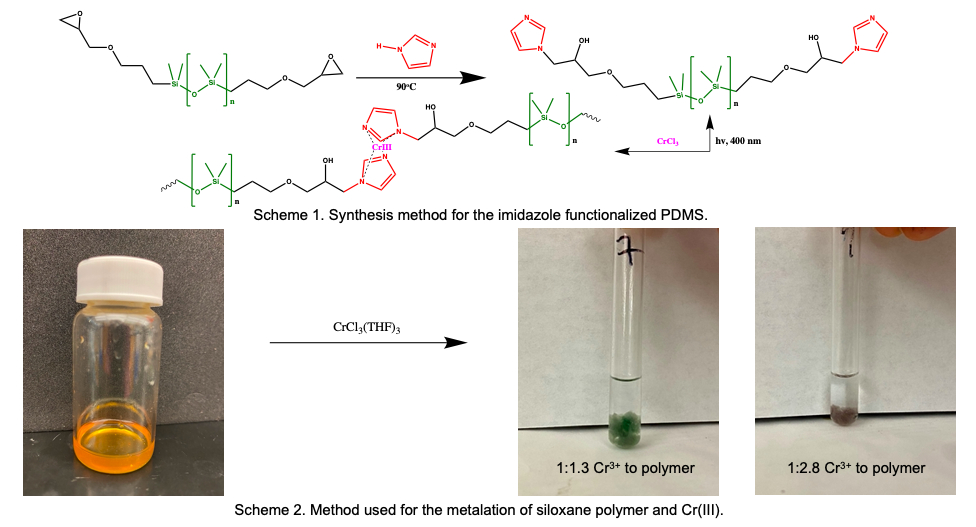3823310
Photo-responsive Cr(III)-supramolecular siloxane polymers with self-healing potential | Poster Board #1506
Date
March 28, 2023
Related Products
Photocaged R-alkoxysilanes for on-demand functionalization and polymerization control
R-alkoxysilanes are the monomer workhorses of silicon-based sol-gel chemistry and are used as the building blocks for materials from silicas to silicones…
Photoresponsive silicon-based macromolecules: New synthetic methods and unique properties
Recent work in the Furgal Laboratory at BGSU is focused on the development of photoactive silicon-based materials with high porosity, phototriggered formation and/or controlled degradation of siloxane bonds, and photodynamic self-healable polymer systems…
Hybrid organo-siloxane 3D printable materials for medical devices | Poster Board #1438
There is a growing need in modern medicine for highly customizable equipment. One highly adaptable method to produce various parts is through 3D printing applications. For medical environments, the substances that make up the desired material used must be biologically stable and nontoxic…



